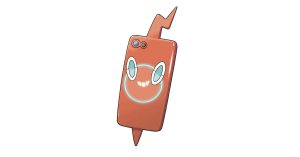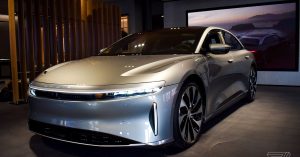What do Volumetric Lighting and Volumetric Fog do – Graphics Settings Explained

Comments
Volumetric Lighting, otherwise known as God Rays (or Crepuscular Rays), are a modern staple in terms of physical lighting models. This form of lighting manifests as visible light beams shining through an environment, rather than the usual flat lighting. Typically, Volumetric Lighting is used to add realistic atmospheric depth to a scene, as well as amplifying visuals with exaggerated light rays.
Volumetric Fog is essentially an offshoot of this technique, creating dense fog in a scene which, when combined with Volumetric Lighting, can lead to deeply atmospheric visuals. This technique is used for fog, clouds, dust, smoke, or any airborne material capable of partial occlusion. It’s particularly useful when combined with Volumetric Lighting, amplifying the effects.
In terms of examples, both Volumetric Lighting and Fog are widely used graphical effects in modern gaming. Perhaps a standout example, however, is Red Dead Redemption 2. Rockstar’s Western epic is positively loaded with volumetric effects at every turn, whether it be swirling fog in the swamps, a misty morning over the plains, or impenetrable snow storms up in the mountains. Red Dead 2 is a gorgeous game, no doubt it, and Volumetric effects are one of the key aspects behind its sense of style.

While the likes of Volumetric Lighting, Fog and Clouds are inextricably linked, sometimes developers opt for one or the other. Case in point Alien Isolation, which uses Volumetric Lighting to fantastic effect, adding significant depth to any given scene, enhancing both realism and immersion.
Alien: Isolation Volumetric Lighting
 |
 |
How demanding are Volumetric Lighting and Volumetric Fog?
Typically, Volumetric Lighting and Volumetric Fog can be some of the most demanding graphics settings found in games, full stop. Some of the performance demands will be tied into other settings such as Lighting and Shadow Quality but, by and large, Volumetric Lighting and Fog can significantly reduce your frame rates.
Volumetric Lighting and Volumetric Fog typically have a heavy performance hit on your GPU. Typical frame rate drops from turning up Volumetric settings vary from 5-40% FPS drops depending on the game and how intense the effects are.
Is it worth enabling Volumetric Effects?
Both Volumetric Light and Volumetric Fog are going to be some of the first graphics settings to get the axe if you’re struggling for performance. Volumetric effects can often look absolutely fantastic but when you’re dealing with double-digit performance hits it can become a necessary sacrifice to turn Volumetric settings down to Medium, Low, or even turn it off entirely in some extreme circumstances.
As with most graphics settings, you will find it a case of diminishing returns the higher you go. Having Volumetric Effects on is typically good enough for the average user, while turning it up to Ultra can tank the frame rate with only a tiny difference to visual quality.
 |
 |
That said, if you’re using a high-end graphics card or you’re playing an older game, and you have performance to spare, then for visual quality alone it’s worth turning up Volumetric Fog and Lighting up as high as they can go. It’ll carve a chunk out of your FPS but for games like Red Dead Redemption 2 (and Fallout 4, oddly enough) it can really have a significant impact on overall visual quality.
Ambient Occlusion Anisotropic Filtering / Texture Filtering Chromatic Aberration Decals / Decal Filtering Level of Detail / LOD Sub Surface Scattering Volumetric Effects







